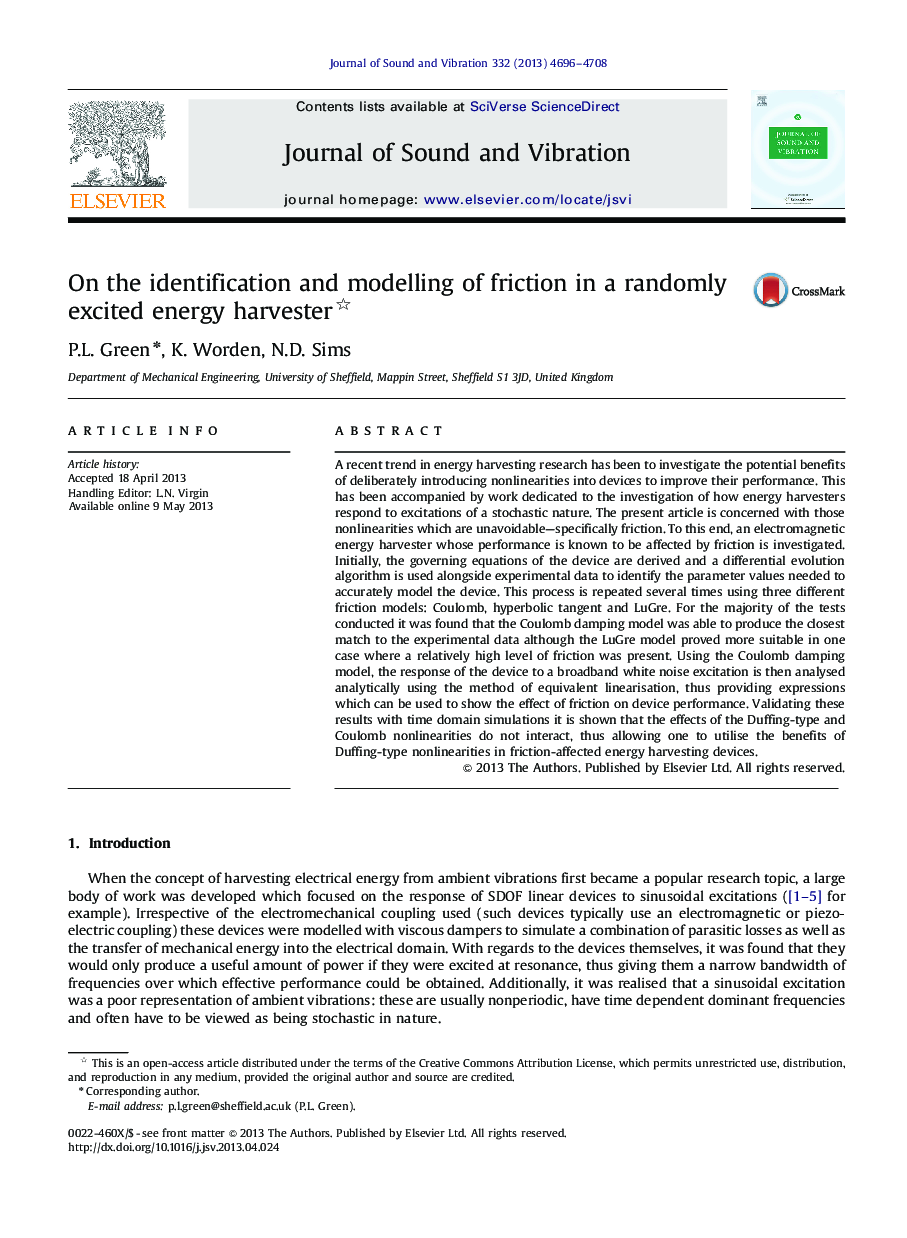| Article ID | Journal | Published Year | Pages | File Type |
|---|---|---|---|---|
| 10289232 | Journal of Sound and Vibration | 2013 | 13 Pages |
Abstract
A recent trend in energy harvesting research has been to investigate the potential benefits of deliberately introducing nonlinearities into devices to improve their performance. This has been accompanied by work dedicated to the investigation of how energy harvesters respond to excitations of a stochastic nature. The present article is concerned with those nonlinearities which are unavoidable-specifically friction. To this end, an electromagnetic energy harvester whose performance is known to be affected by friction is investigated. Initially, the governing equations of the device are derived and a differential evolution algorithm is used alongside experimental data to identify the parameter values needed to accurately model the device. This process is repeated several times using three different friction models: Coulomb, hyperbolic tangent and LuGre. For the majority of the tests conducted it was found that the Coulomb damping model was able to produce the closest match to the experimental data although the LuGre model proved more suitable in one case where a relatively high level of friction was present. Using the Coulomb damping model, the response of the device to a broadband white noise excitation is then analysed analytically using the method of equivalent linearisation, thus providing expressions which can be used to show the effect of friction on device performance. Validating these results with time domain simulations it is shown that the effects of the Duffing-type and Coulomb nonlinearities do not interact, thus allowing one to utilise the benefits of Duffing-type nonlinearities in friction-affected energy harvesting devices.
Related Topics
Physical Sciences and Engineering
Engineering
Civil and Structural Engineering
Authors
P.L. Green, K. Worden, N.D. Sims,
